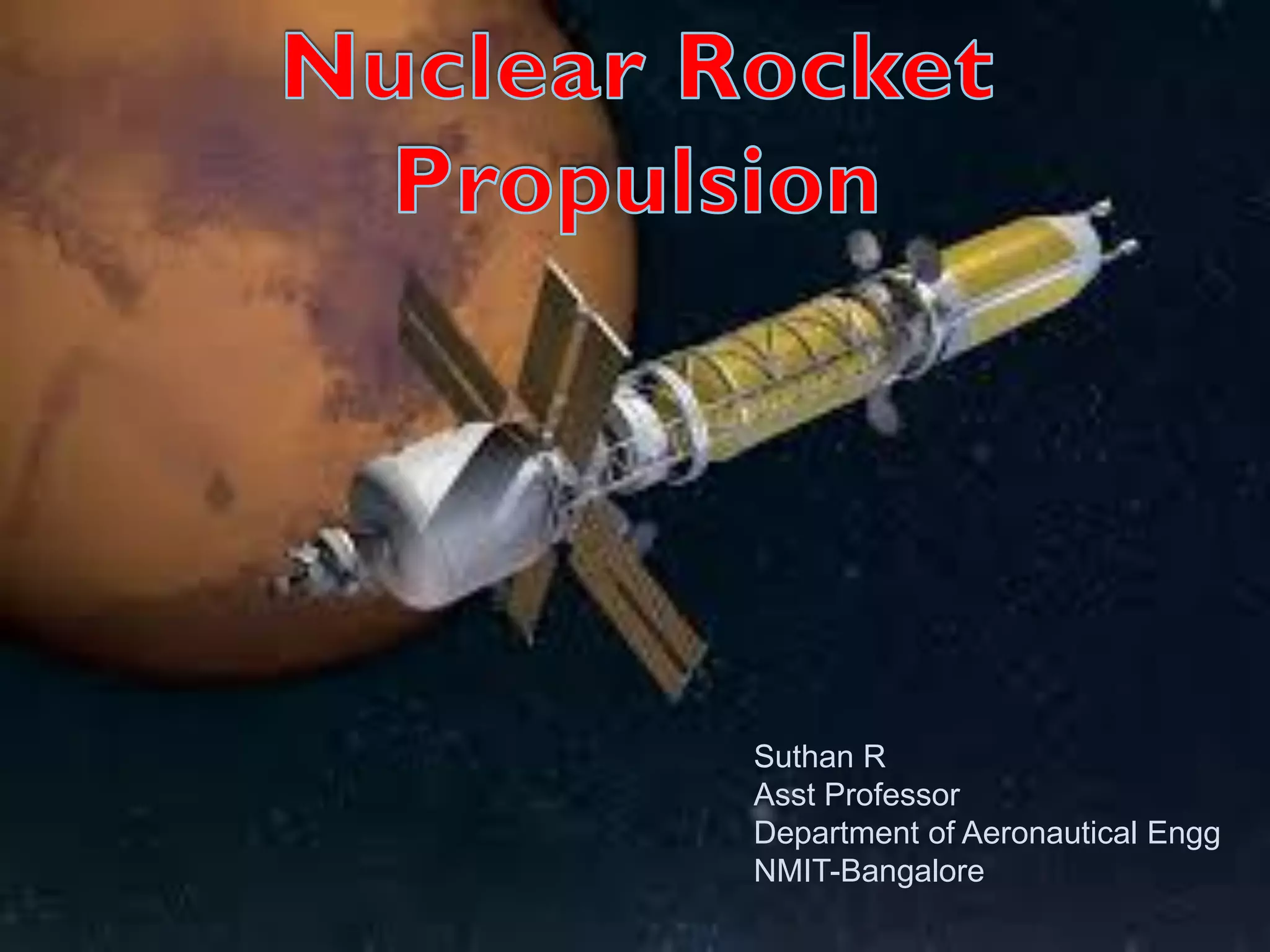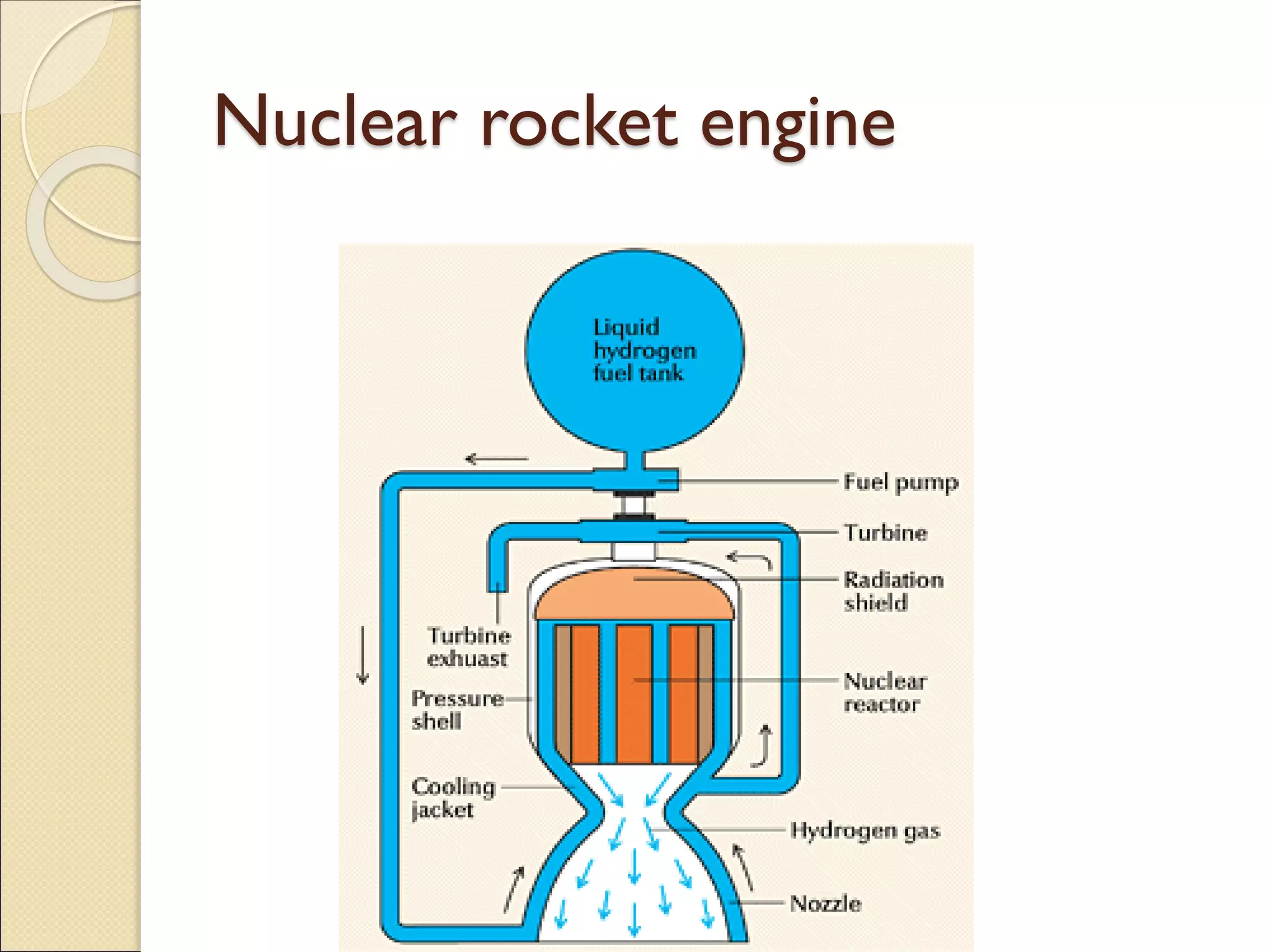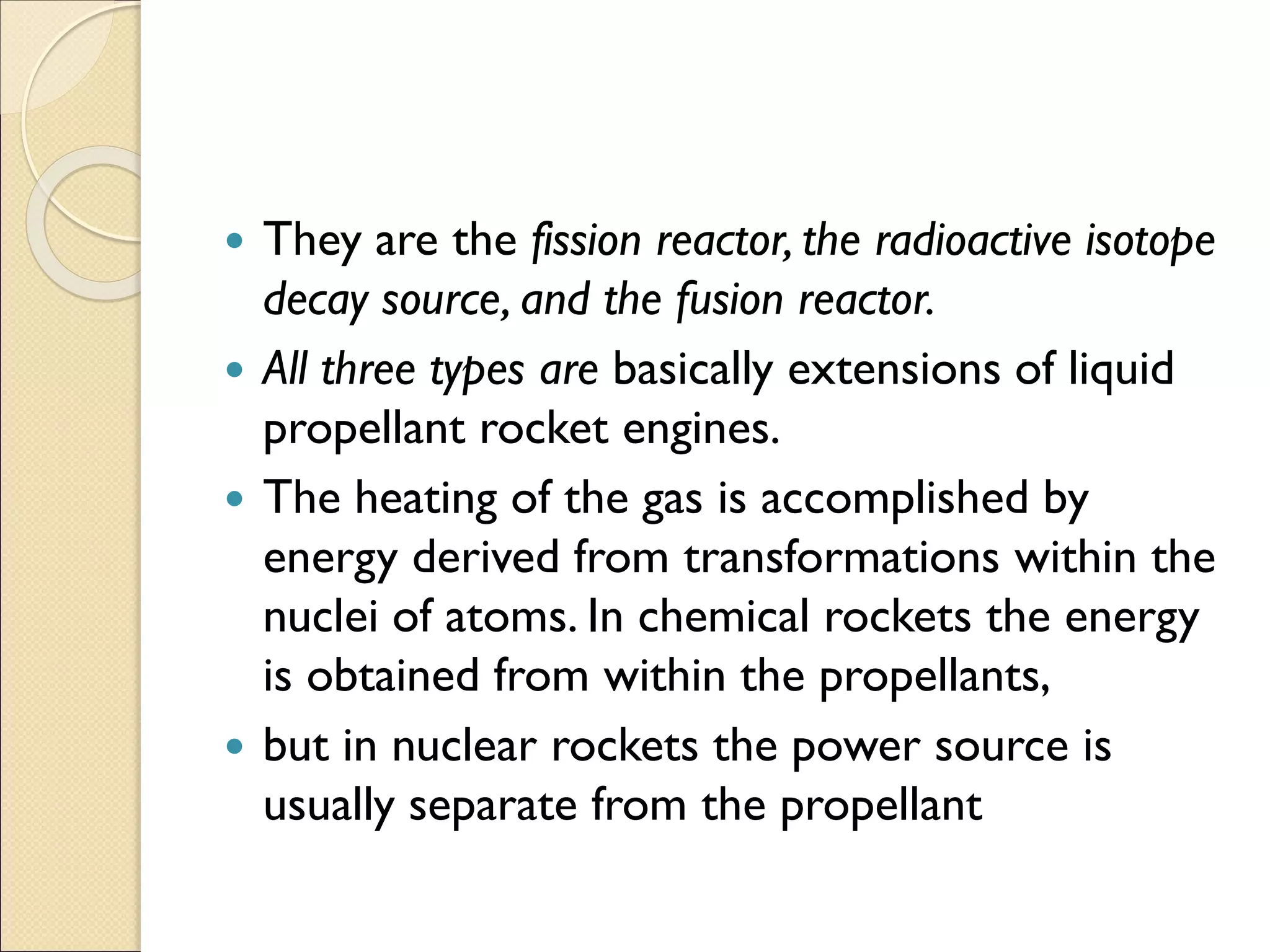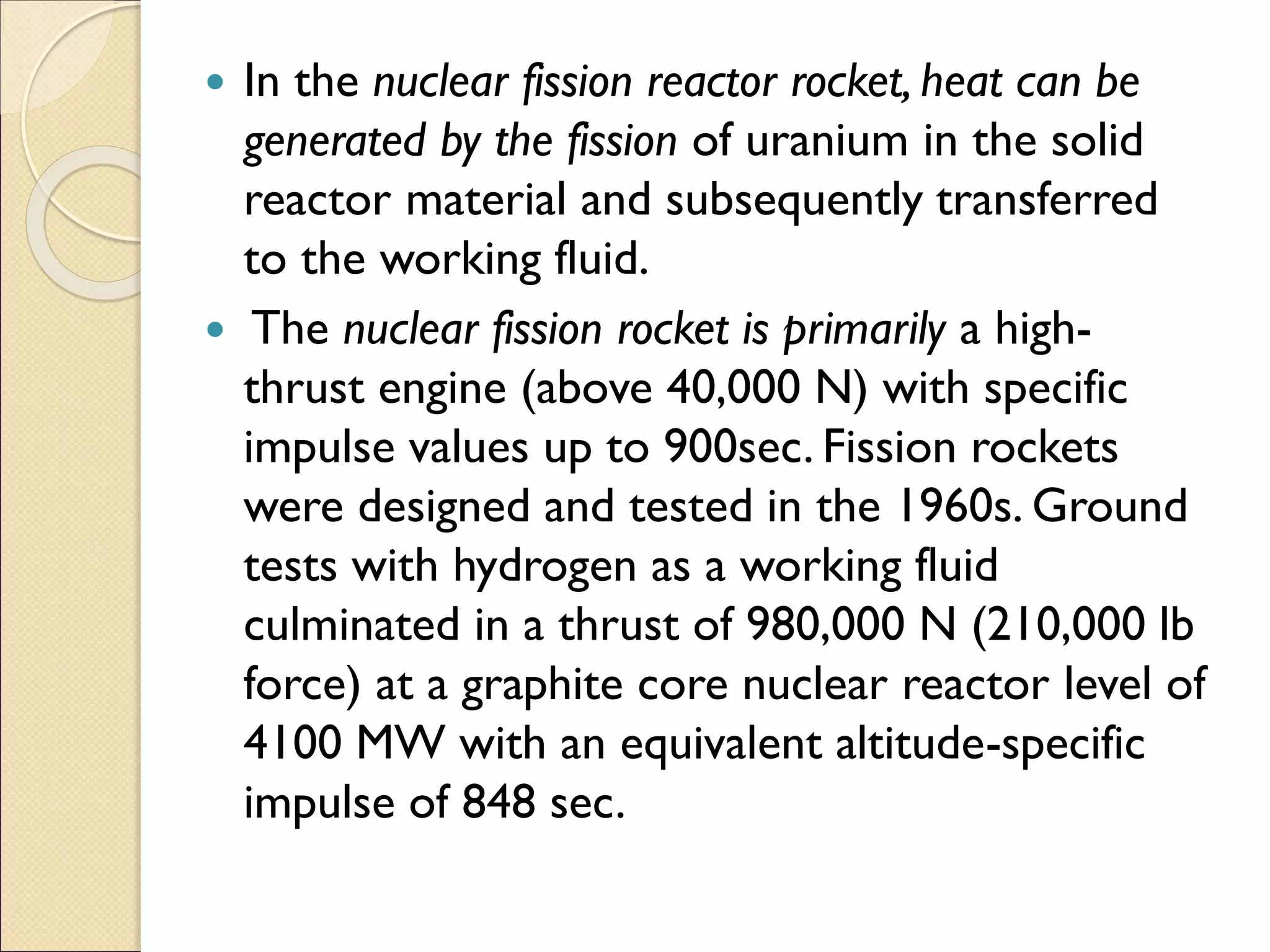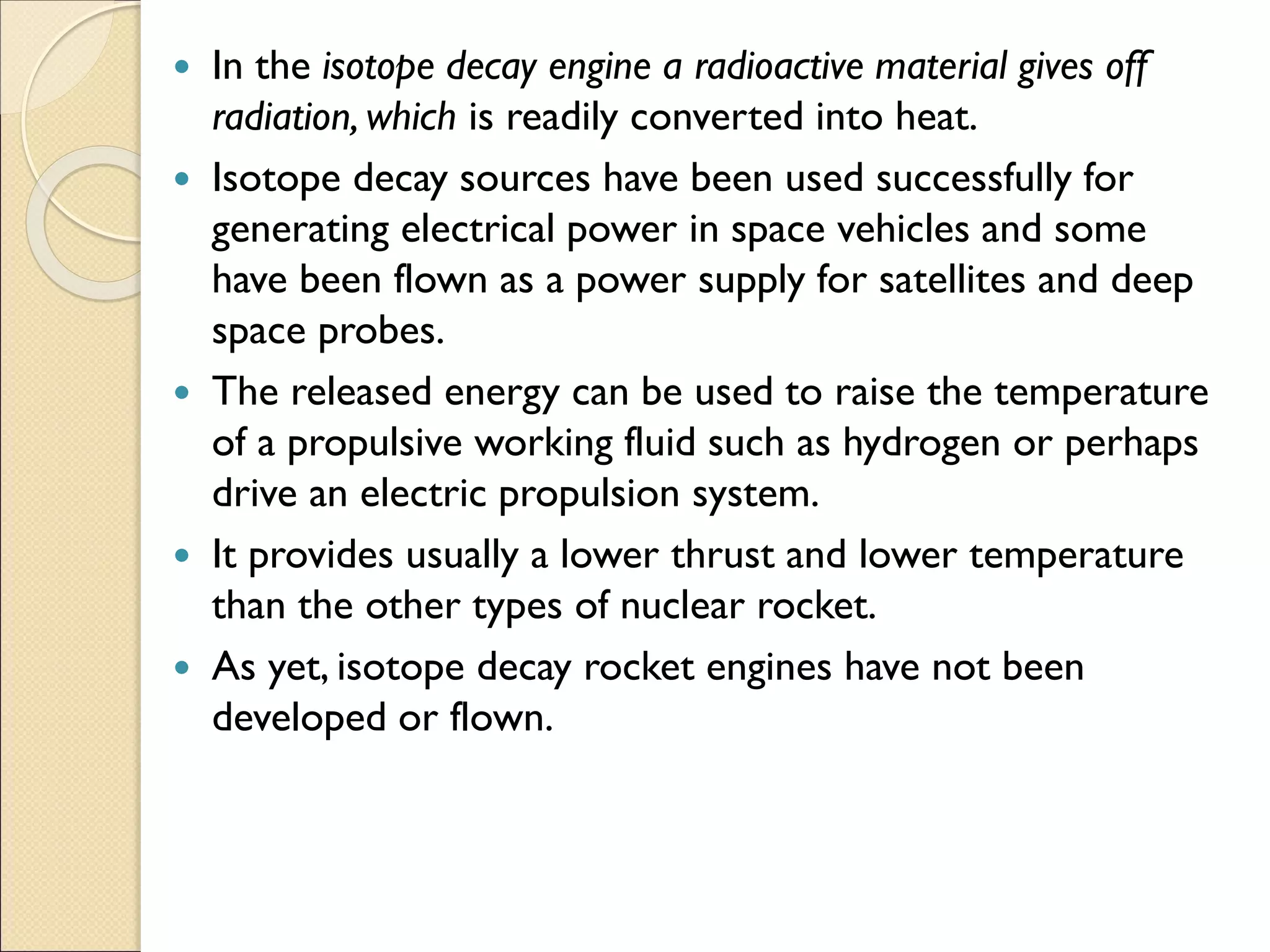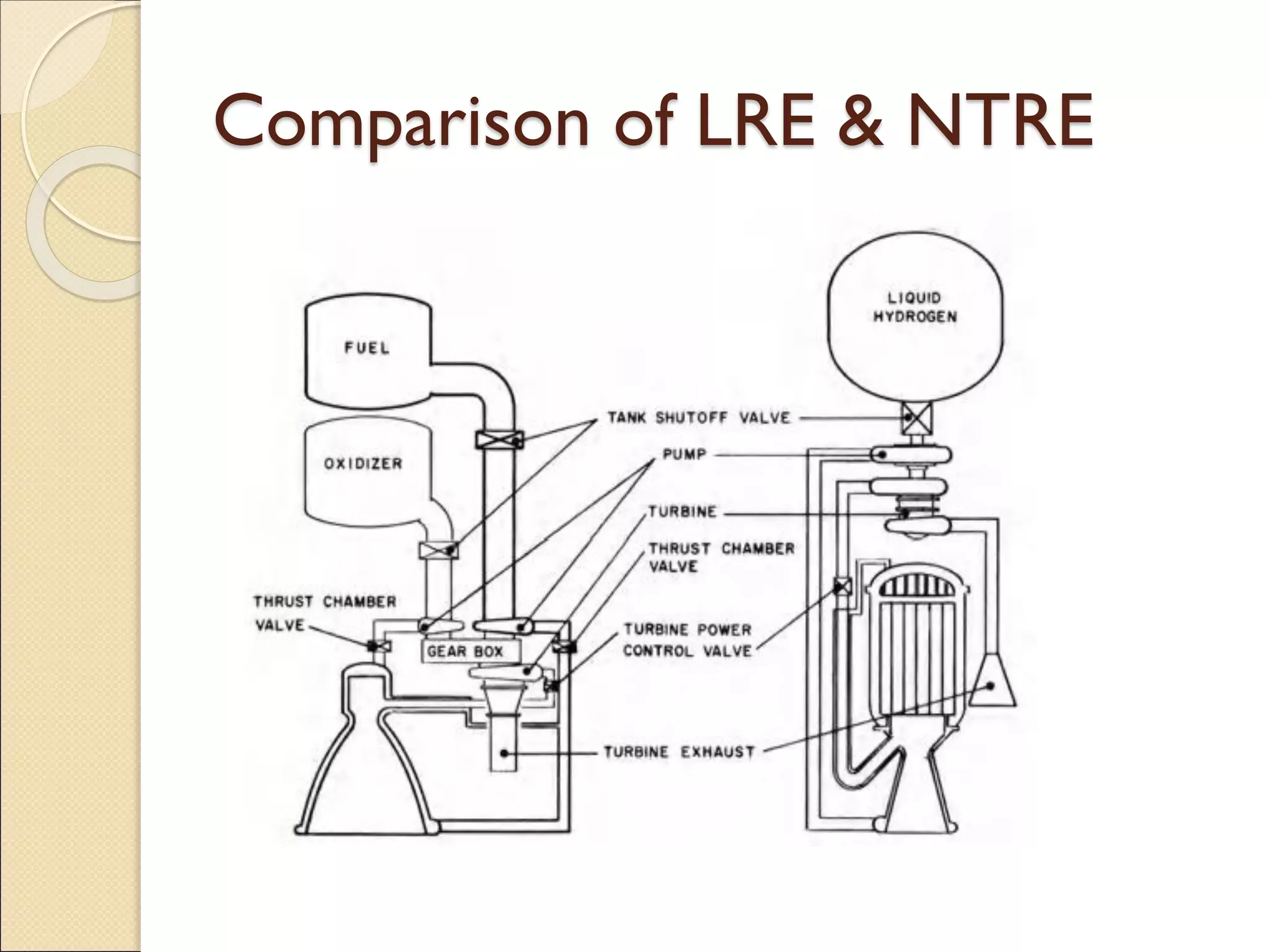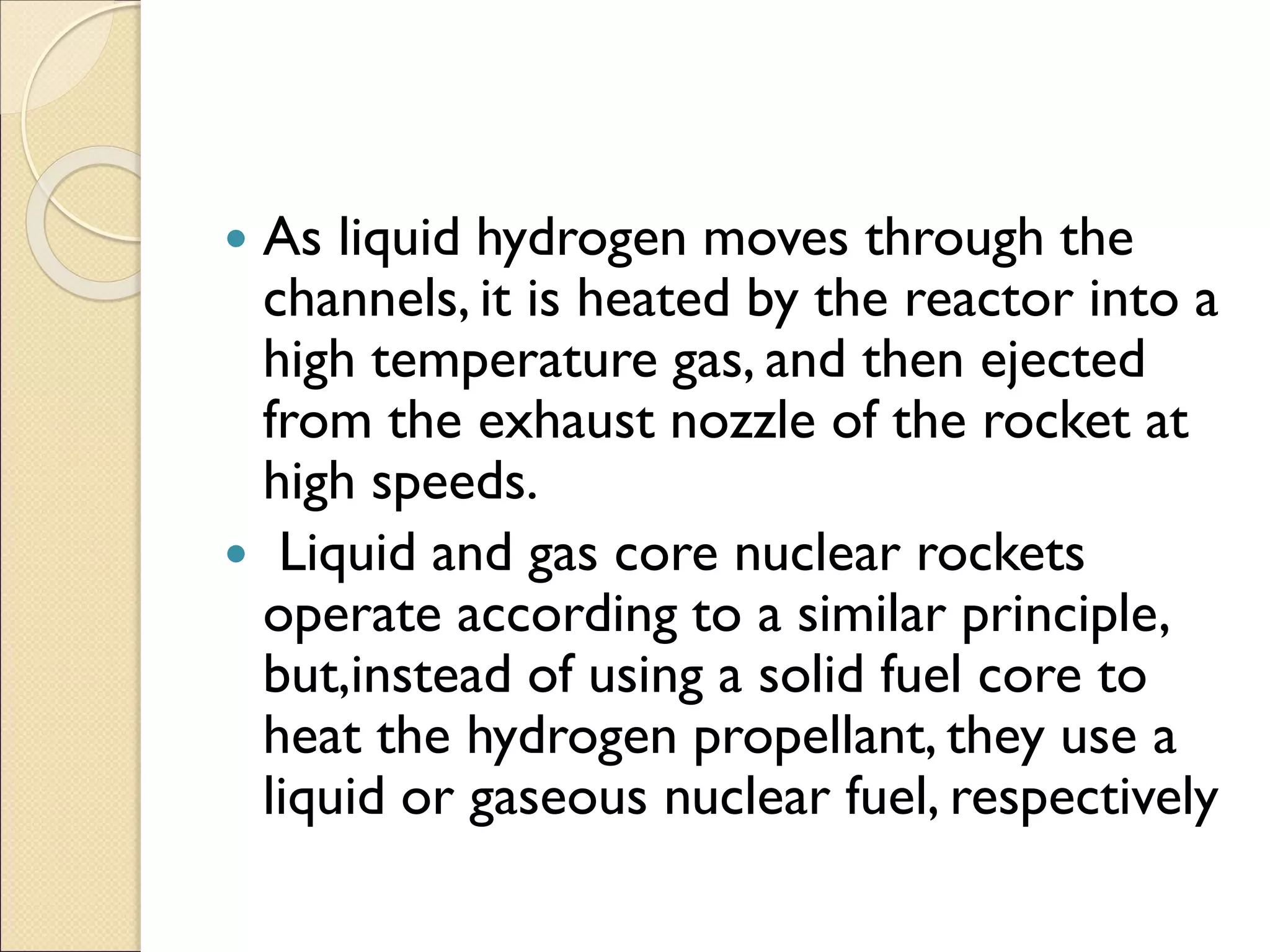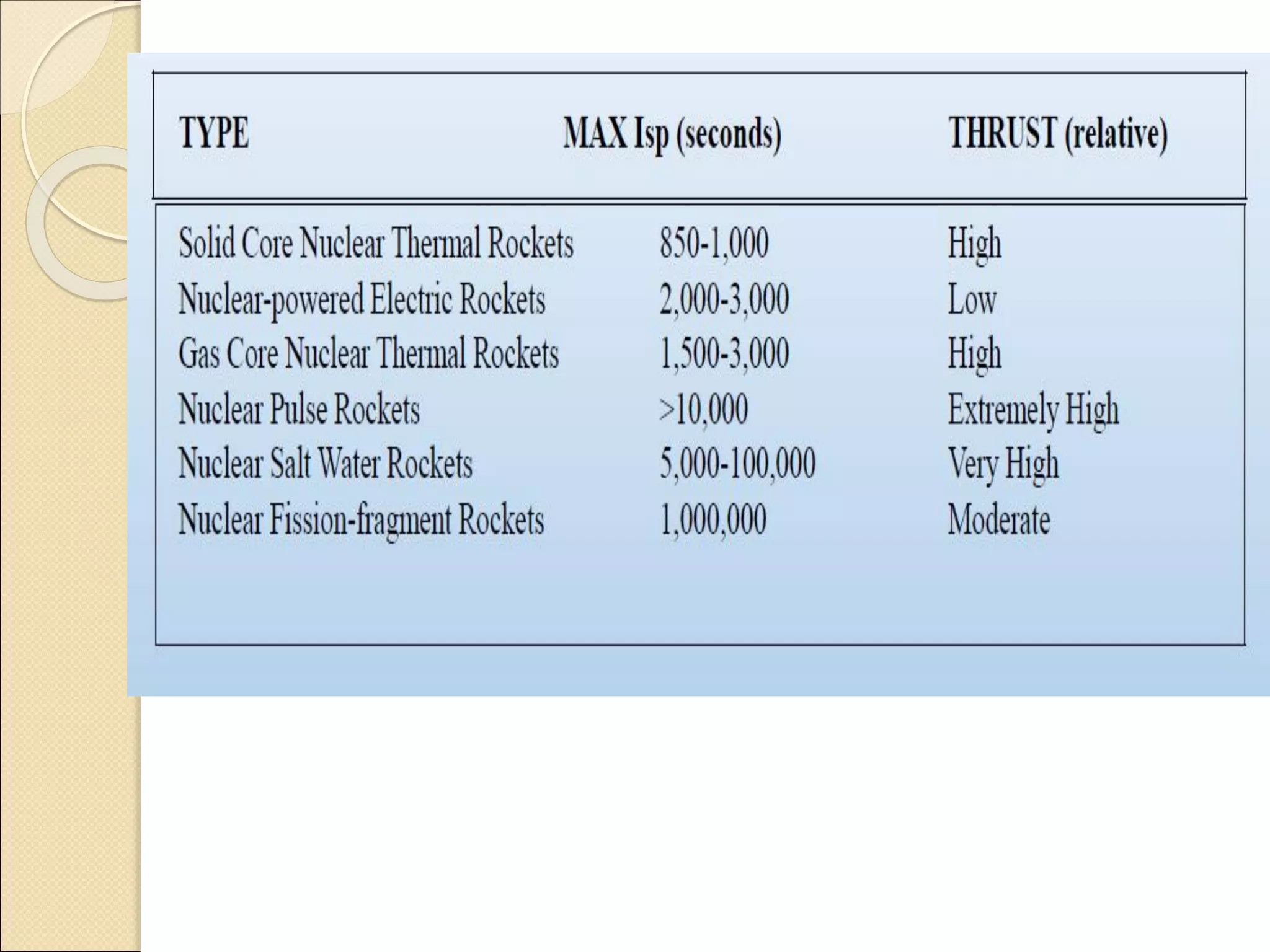This document discusses nuclear thermal propulsion for space applications. It begins by introducing the concept and some historical programs in the US and Russia. It then discusses the benefits of nuclear thermal propulsion such as high efficiency and payload capacity compared to chemical rockets. The document goes on to describe three types of nuclear energy sources - fission, radioactive isotope decay, and fusion - that have been investigated for heating propellant. It provides details on nuclear fission and isotope decay rockets and components of a nuclear fission reactor before concluding with a comparison of advantages and disadvantages of nuclear rockets.
